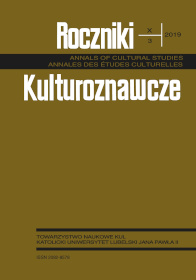Kształtowanie się tureckiej tożsamości kulturowej po reformach Kemala Mustafy Atatürka
Shaping of Turkish Culture Identity after the Reforms of Kemal Mustafa Atatürk
Author(s): Emilia SkowronSubject(s): Anthropology, Social Sciences, Culture and social structure
Published by: Towarzystwo Naukowe KUL & Katolicki Uniwersytet Lubelski Jana Pawła II
Keywords: Atatürk; Islam; kemalism; laicism; identity; Turkey
Summary/Abstract: The Republic of Turkey, founded in 1923, has become a new state formation rejecting the Ottoman past. The unified nation has become a primary category—the opposite of the multi-ethnic society of the Ottoman Empire, in which belonging to the Muslim umma was more important than belonging to the nation. According to the founder and reformer of the new Turkey—Atatürk, complete modernization could only take place through reforms inspired by the achievements of European civilization. In the first years many changes were introduced, which were to rebuild the country on a European model. Laicism can be distinguished as the main trend, that removed religion from the public sphere in order to open society to modern solutions. There are three trends that shape the Turkish identity: Turkish (pre-Islamic), Muslim and nationalist. This indicates the complexity of the identity of Turkish residents who feel both as Turks and Muslims. The question arises about their affiliation to a civilization due to the fact that they adopted many of European civilizations while cultivating old practices and maintaining values rooted in Islam. Today, the restoration of Islam is becoming more and more visible, which indicates on the exterior of the secularization processes underlying the creation of the new Turkish Republic.
Journal: Roczniki Kulturoznawcze
- Issue Year: 10/2019
- Issue No: 3
- Page Range: 123-145
- Page Count: 23
- Language: Polish

